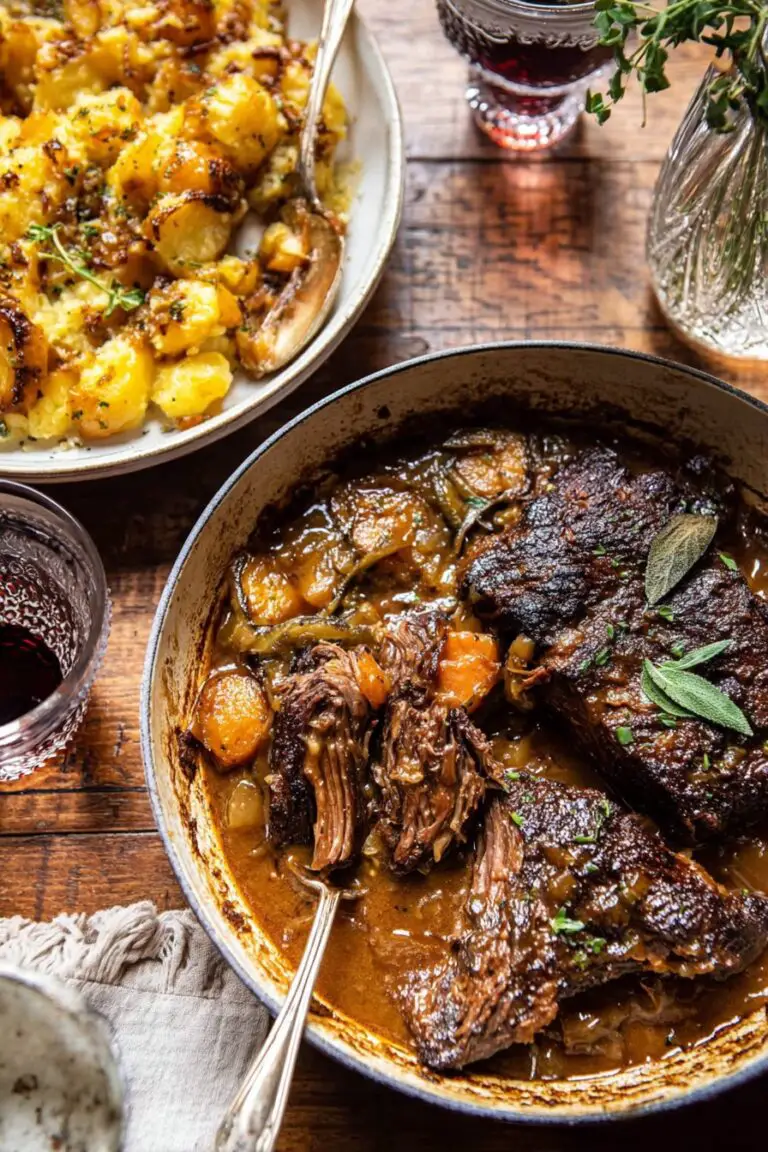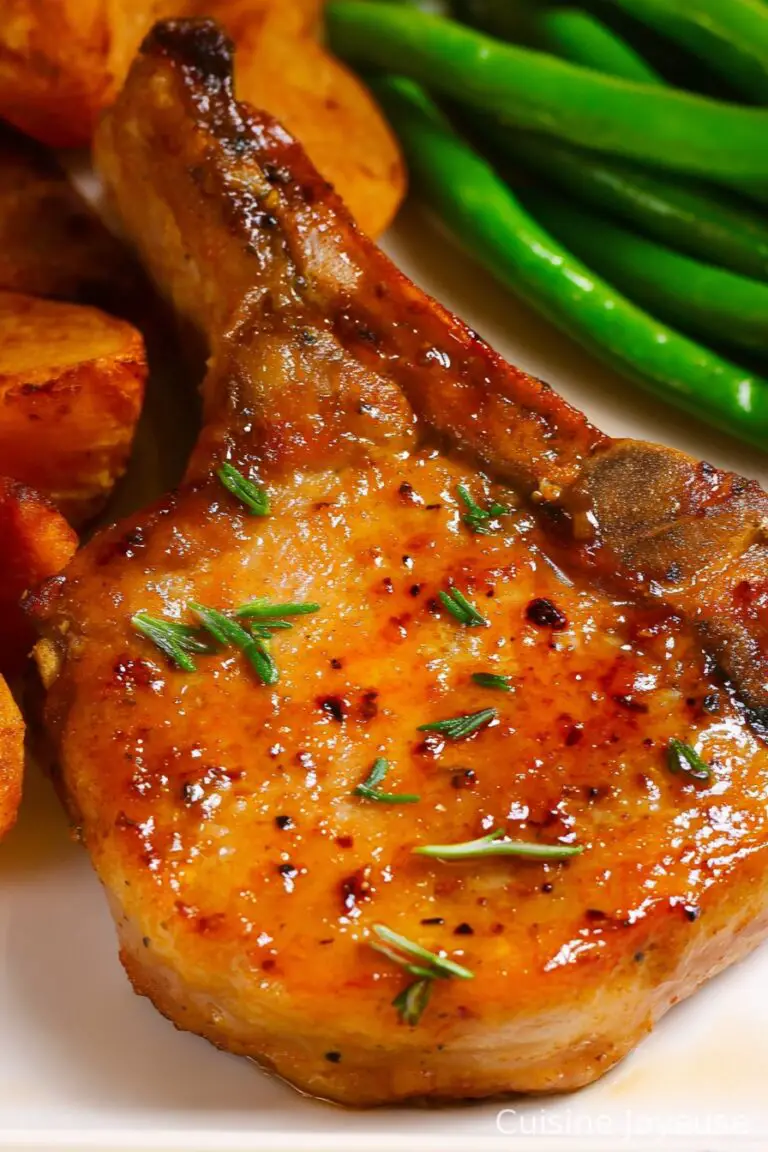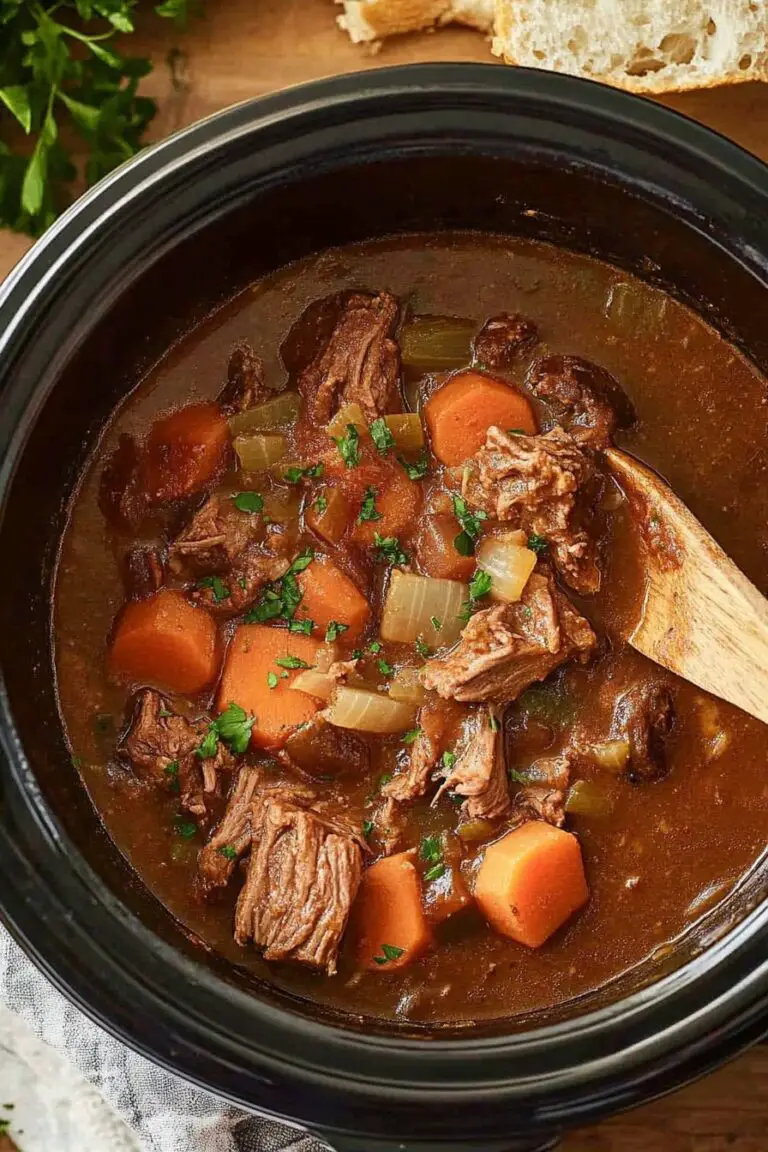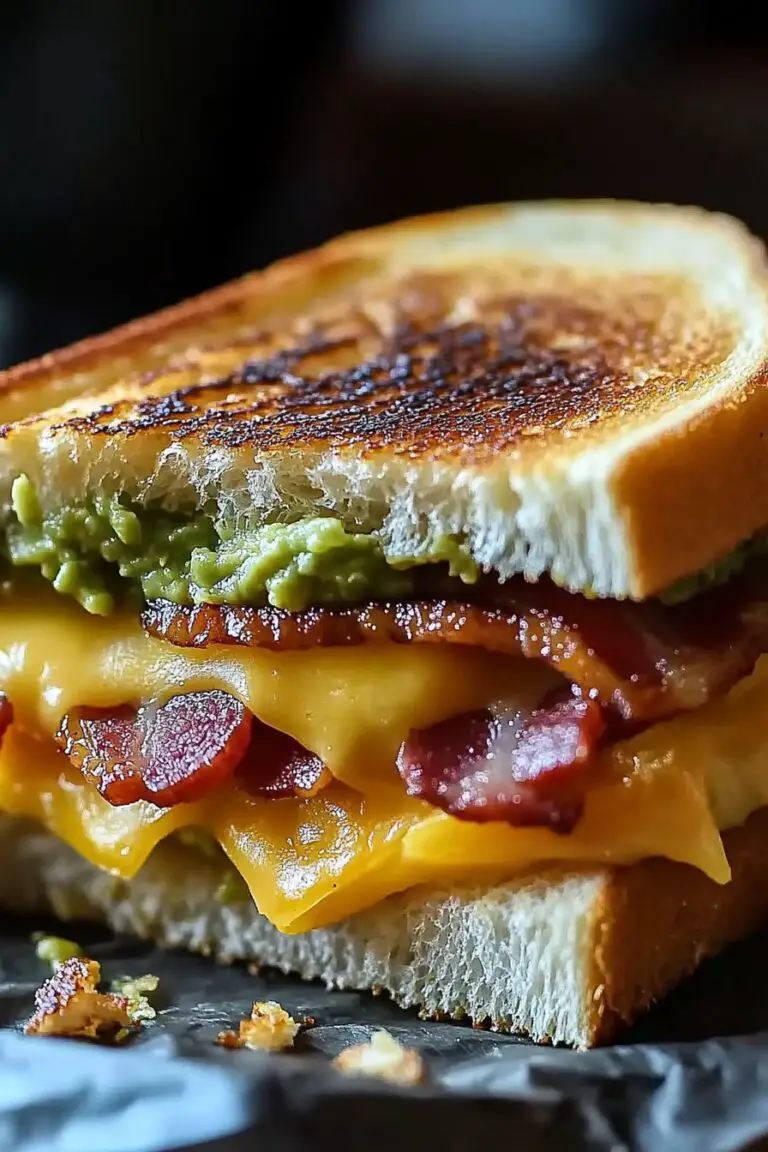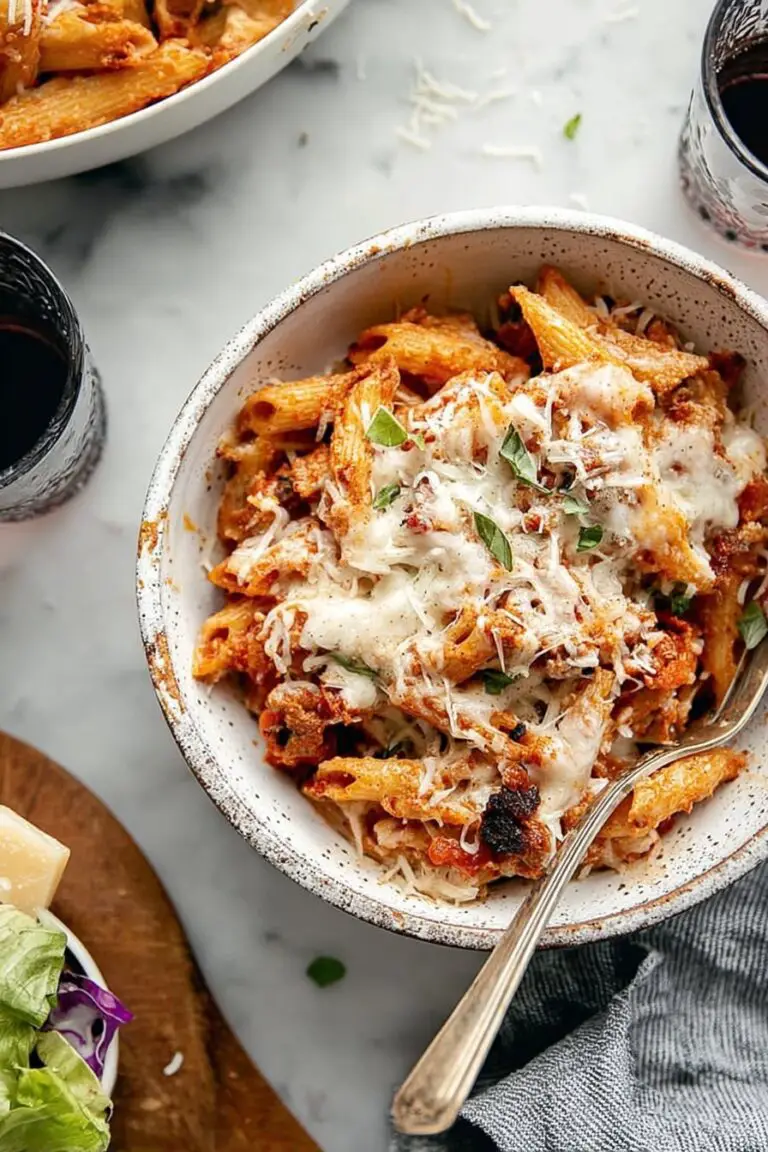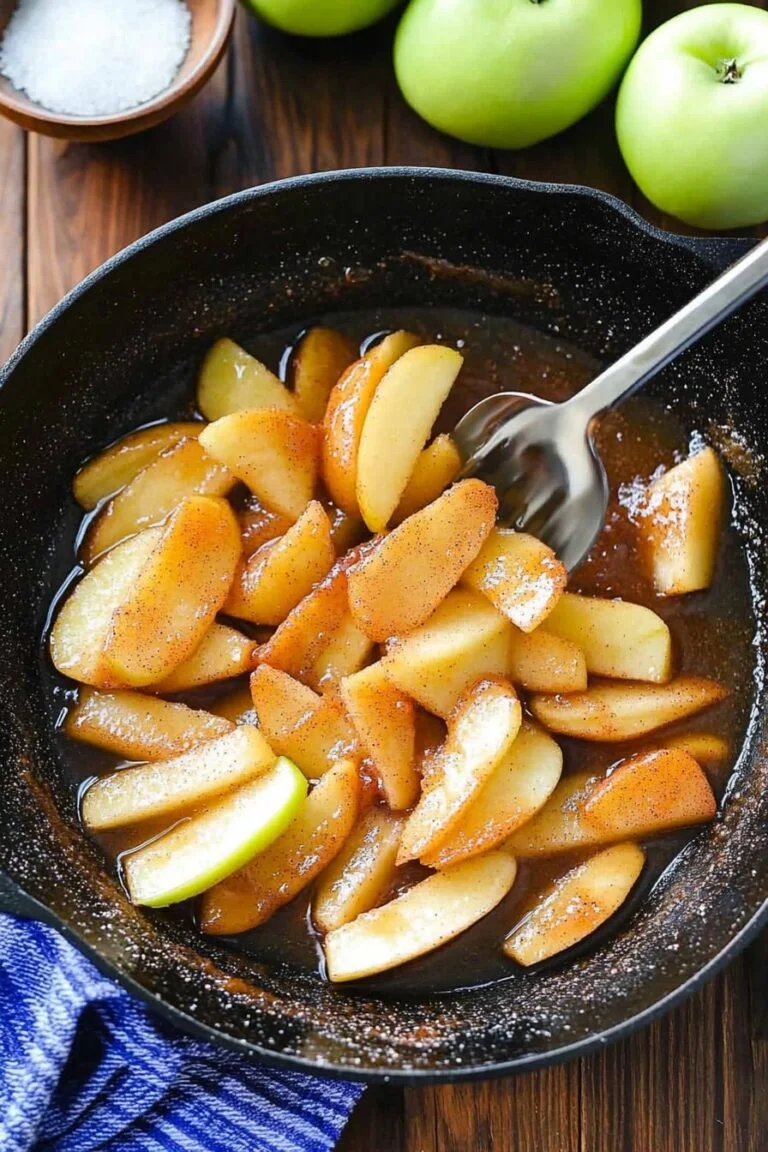new recipe: Bangers and Mash – A Chatty, Cozy Guide from My Kitchen
Let’s Talk About Bangers and Mash (and My Slight Obsession With It)
Alright, so if you’ve never had Bangers and Mash, you’re in for something special. I first cooked this on a chilly Tuesday (of course it was raining) because I’d just watched some British telly and, well, I was hungry. My first go? Let’s just say the sausages were a little, um, enthusiastic and exploded all over the pan. But honestly, it’s one of those meals that feels like a warm hug—messy pan and all. Now every time I make it, I think of that disaster and, weirdly, look forward to it. Plus, my dog always gets a bit of sausage that “accidentally” rolls off the plate. It’s tradition at this point.
Why I Keep Coming Back to This Dish
I make Bangers and Mash when I need something that doesn’t ask too many questions. My family goes bananas for this (especially my cousin, who claims he could eat a mountain of mash and still have room for pudding). I’ll admit, sometimes I can’t be bothered to make onion gravy from scratch, and I just use the packet. No one’s ever noticed—well, except my mum, but she’s got taste buds like a bloodhound. And honestly, if you’ve ever been put off by lumpy mash or dry sausages, this recipe sorts all that. No more sad sausage dinners here.
What Goes Into My Bangers and Mash (Swaps Welcome!)
- 4-6 good quality sausages (Cumberland if you can swing it, but any thick pork works; veggie sausages are surprisingly good too)
- About 800g potatoes, peeled and chopped (sometimes I leave the skins on if I’m in a rush or just feeling lazy)
- 2-3 tablespoons butter (or olive oil if you’re dairy-free; my friend swears by margarine and, honestly, it’s fine)
- A generous splash of milk or cream (I’ve used oat milk before and it’s grand, though maybe not for purists)
- 1-2 onions, sliced thin (red or white, whichever’s lurking in the cupboard)
- 2 teaspoons flour (plain, or cornflour if you need it gluten-free)
- 1 cup beef or chicken stock (cube works in a pinch, and I’ve even used veggie stock when that’s all I had)
- Salt & pepper (to taste, and then some)
- Optional: A splash of Worcestershire sauce, mustard, or a handful of frozen peas for the side
My grandmother always insisted on branded British sausages, but, honestly, whatever’s on offer usually finds its way into my trolley.
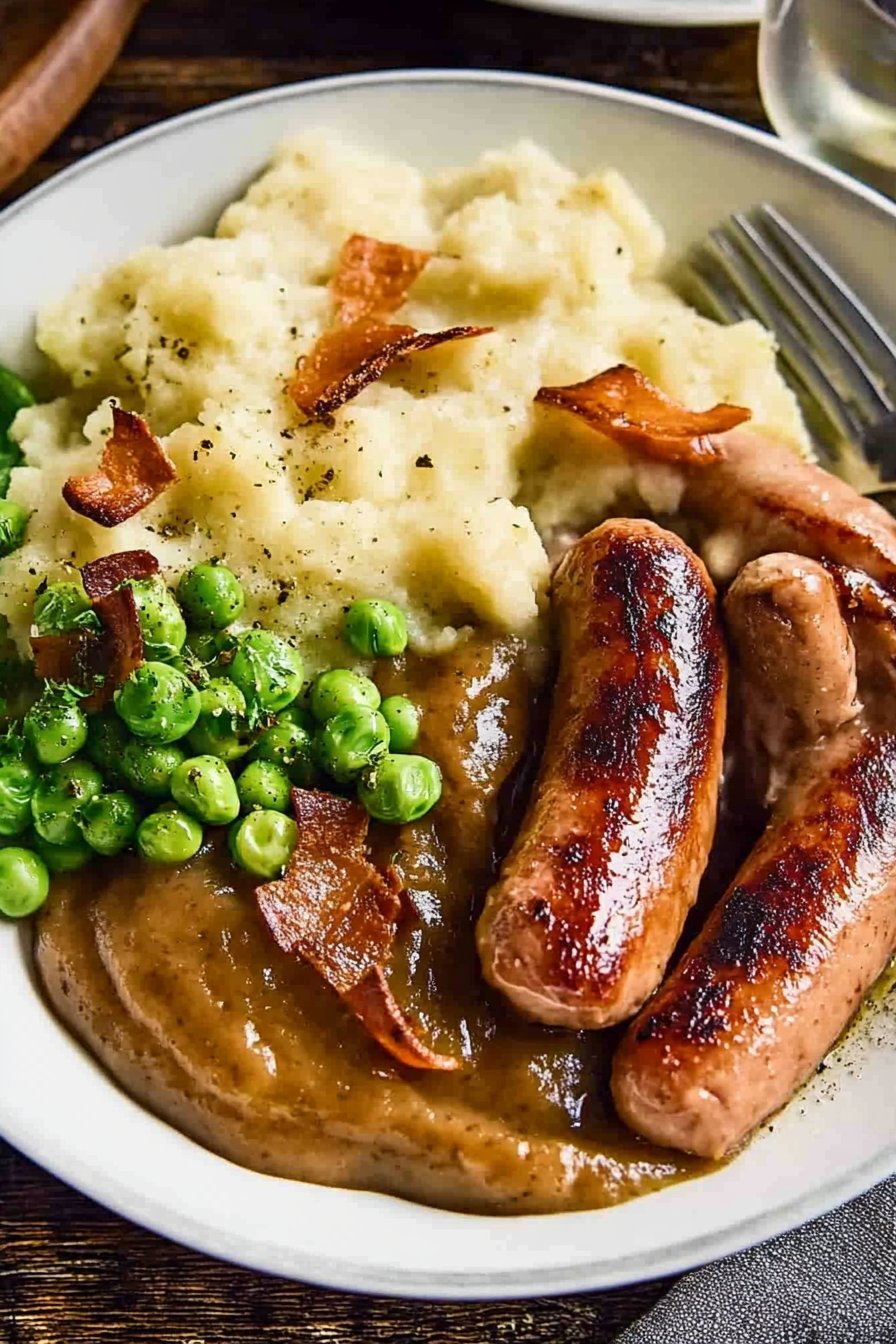
How I Actually Make Bangers and Mash (With Only Mild Panic)
- Get the spuds going. Toss your potatoes in a big pot, cover with cold water, salt the lot, and bring them to a boil. I never set a timer—just poke them after about 15-20 minutes. When they’re soft enough to break with a fork, you’re golden.
- Sausage time! While the potatoes are doing their thing, fry your sausages in a large pan over medium heat. Don’t overcrowd—give them some breathing space (I learned this the hard way, trust me). You want them brown and a little crispy, which probably takes about 15 minutes. Keep turning them; and don’t worry if a few pop open. That’s the charm.
- Onion gravy magic. Chuck your onions into the sausage pan as the sausages finish, letting them soak up the sausagey goodness (not a technical term, but you get me). Stir now and then until they’re soft and starting to caramelise—about 10 minutes if you’re patient. Sprinkle over the flour, stir for a minute, then slowly pour in your stock, scraping any stuck bits up as you go. Add a dash of Worcestershire or mustard if you like. Simmer until it thickens, about 5-7 minutes. This is where I usually sneak a taste. Or two.
- Back to potatoes. Drain and mash those spuds with butter and milk until smooth, lumpy, or somewhere in between (I like a bit of texture). Salt and pepper to taste. Actually, I find it works better if you mash them while they’re still steaming hot.
- Get it all together. Pile the mash onto plates, top with sausages, drown everything in onion gravy. If you’ve sorted peas or greens, now’s the time. Sometimes I just sprinkle on a bit of parsley to look fancy, but honestly that’s just for photos.
And yes, don’t worry if your kitchen looks like a tornado hit it by the end. That’s what aprons are for (in theory).
Notes That Only Come From (Mild) Culinary Misadventures
- Mashed potatoes go gluey if you overwork them. Learned that one the sticky way.
- If your sausages split, don’t stress! Just call it “artisan style”—no one’s ever complained in my house.
- I think leftover mash tastes better fried up the next morning, but maybe that’s just me.
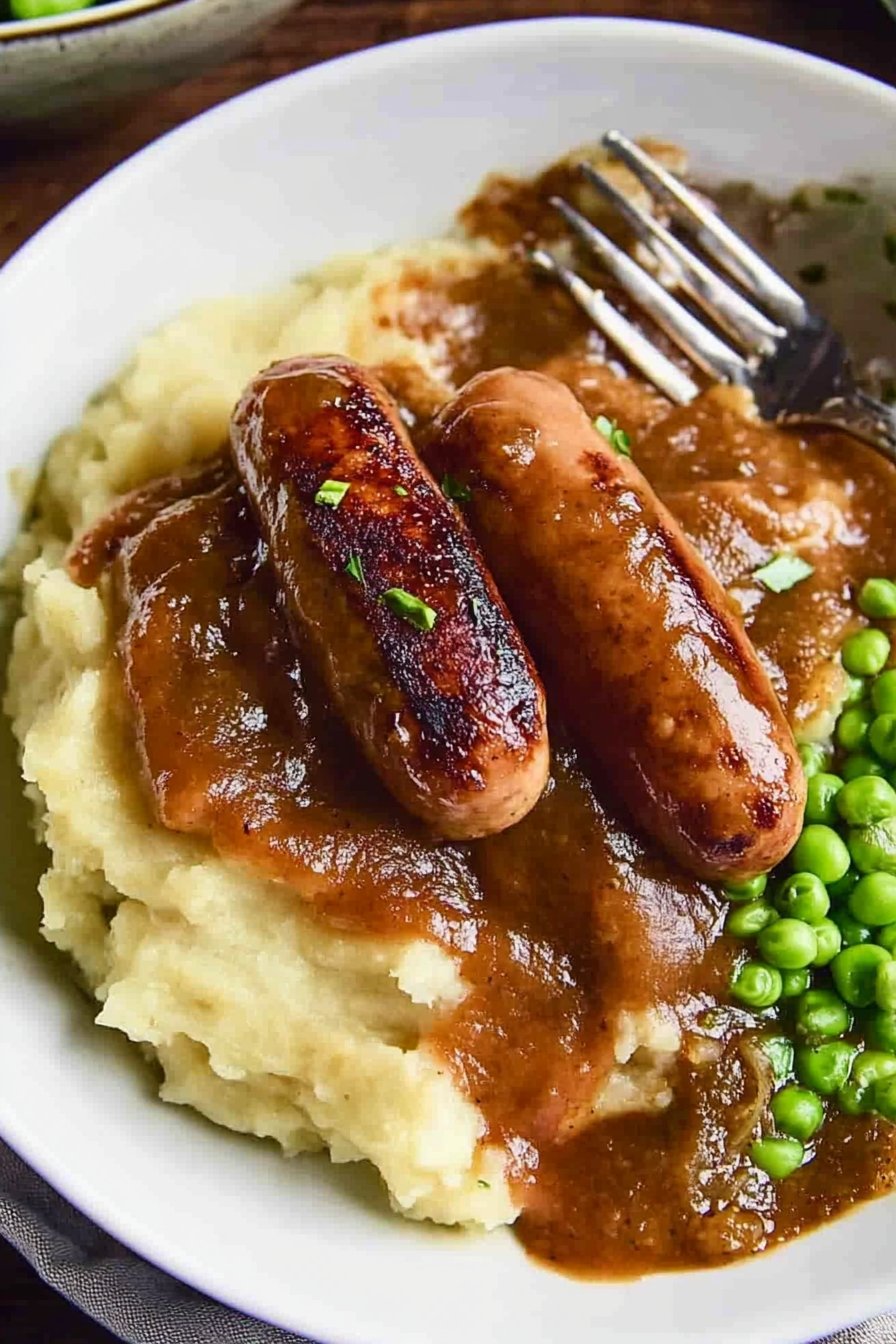
Some Experiments That (Mostly) Worked
- I tried adding horseradish to the mash once. Too much. Wouldn’t recommend unless you like a punch in the nose.
- Chicken sausages work surprisingly well, and lamb is lovely if you’re feeling posh.
- For a vegetarian version, veggie bangers and mushroom gravy are top notch. Even my meat-loving uncle didn’t mind.
What If I Don’t Have A Potato Masher?
I once used a fork and, well, it took ages, but it worked. You could improvise with a wooden spoon or even the bottom of a mug if you’re desperate (been there, done that—don’t judge).
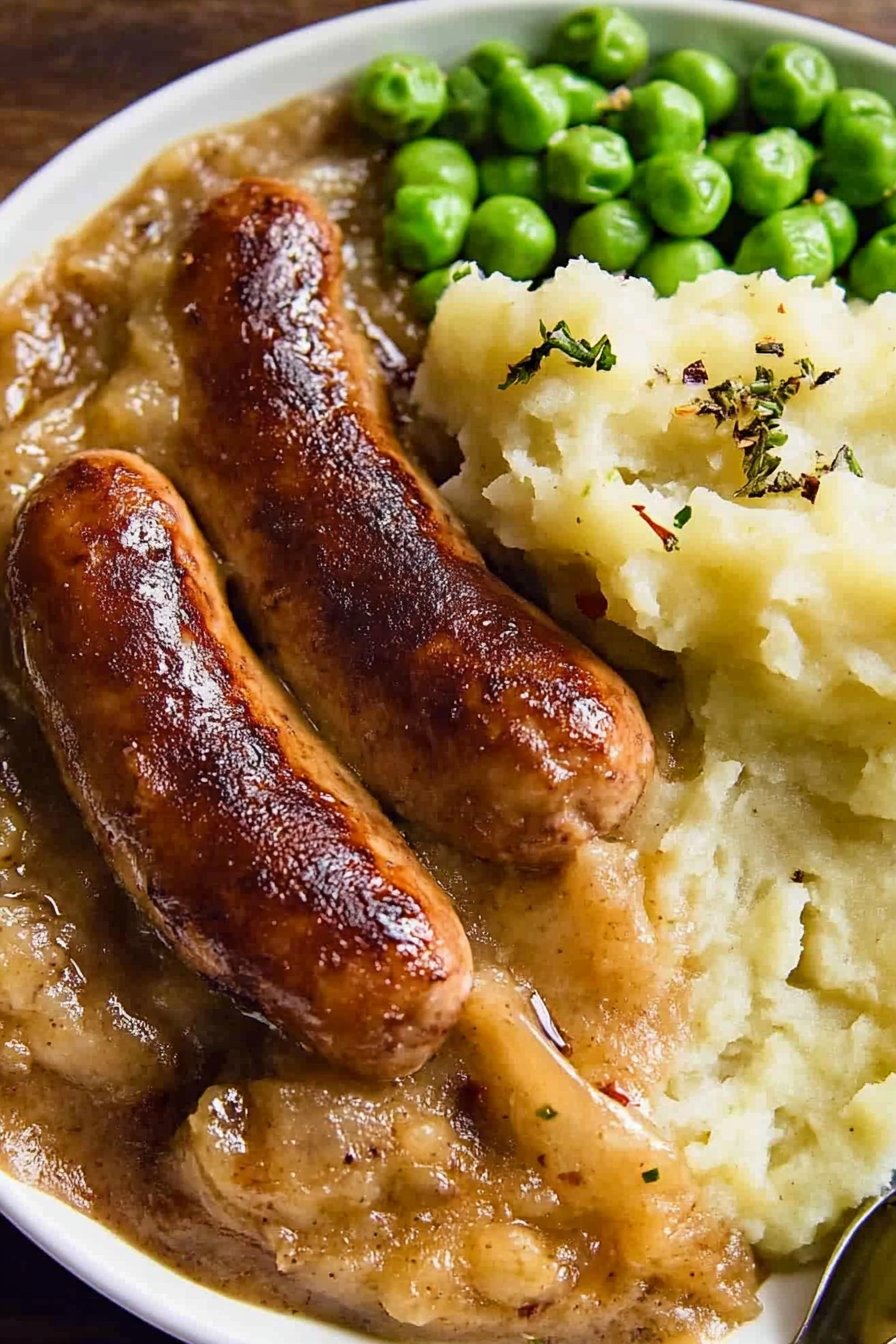
Storing Leftovers (If You Have Any)
You can chuck leftovers in the fridge for a couple days and reheat in the microwave. Though honestly, in my house it never lasts more than a day! Mash gets a bit dry but just splash in a bit more milk when reheating.
Got Guests? Here’s How I Dish It Up
I always pile up the mash, stack on the sausages, and drown the lot in gravy. Sometimes I’ll serve with peas because, well, green stuff. My dad used to insist on a dollop of Colman’s mustard on the side—says it “wakes up the tastebuds.”
Pro Tips (a.k.a. Lessons I’ve Learned the Hard Way)
- I once tried rushing the gravy and dumped in all the stock at once. Lumpy city. Pour it in slowly, trust me.
- Let your sausages rest a few minutes before serving. They finish cooking as they sit, plus you can avoid burning your tongue (yep, did that too).
People Actually Ask Me These Things
- Can I freeze Bangers and Mash?
- Yes, but the mash might go watery when you reheat. Best eaten fresh, but you do you!
- Do I have to peel the potatoes?
- Nah, I don’t always bother. Skins add texture (and save time!).
- What if I don’t have Worcestershire sauce?
- Just skip it or splash in a bit of soy sauce. Not quite the same, but close enough for horseshoes.
- Where can I get proper British sausages?
- I order from British Corner Shop sometimes, or check the local butcher (they’re usually game for requests). Or, if you’re curious, I found this BBC guide kind of fun to read.
- Can I make this dairy free?
- Definitely! Use olive oil and your favourite plant milk, tastes just fine—maybe a smidge different, but still cozy.
One last thing—if, like me, you sometimes finish dinner and realise you forgot the peas (again), no worries. Next time! Anyway, hope you enjoy making (and eating) this as much as I do. Cheers from my slightly messy kitchen to yours.
Ingredients
- 8 pork sausages
- 2 pounds potatoes, peeled and cut into chunks
- 1/2 cup whole milk
- 3 tablespoons unsalted butter
- 1 tablespoon olive oil
- 2 large onions, thinly sliced
- 2 tablespoons all-purpose flour
- 2 cups beef stock
- Salt and black pepper to taste
- Fresh parsley, chopped (optional, for garnish)
Instructions
-
1Place the potatoes in a large pot of salted water. Bring to a boil and cook for 15-20 minutes, or until tender.
-
2While the potatoes cook, heat olive oil in a large skillet over medium heat. Add the sausages and cook for 12-15 minutes, turning occasionally, until browned and cooked through. Remove sausages and keep warm.
-
3In the same skillet, add sliced onions and cook for 5-7 minutes until softened. Sprinkle in flour and cook for 1 minute, stirring constantly.
-
4Gradually pour in beef stock, stirring to avoid lumps. Simmer for 5-7 minutes until the gravy thickens. Season with salt and pepper.
-
5Drain the cooked potatoes and return to the pot. Add butter and milk, then mash until smooth and creamy. Season with salt and pepper.
-
6Serve the sausages over the mashed potatoes, topped with onion gravy. Garnish with chopped parsley if desired.
Approximate Information for One Serving
Nutrition Disclaimers
Number of total servings shown is approximate. Actual number of servings will depend on your preferred portion sizes.
Nutritional values shown are general guidelines and reflect information for 1 serving using the ingredients listed, not including any optional ingredients. Actual macros may vary slightly depending on specific brands and types of ingredients used.
To determine the weight of one serving, prepare the recipe as instructed. Weigh the finished recipe, then divide the weight of the finished recipe (not including the weight of the container the food is in) by the desired number of servings. Result will be the weight of one serving.
Did you make this recipe?
Please consider Pinning it!!


